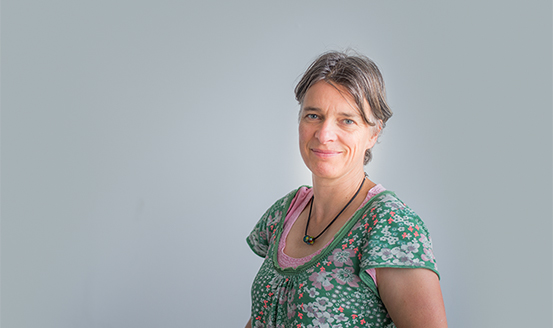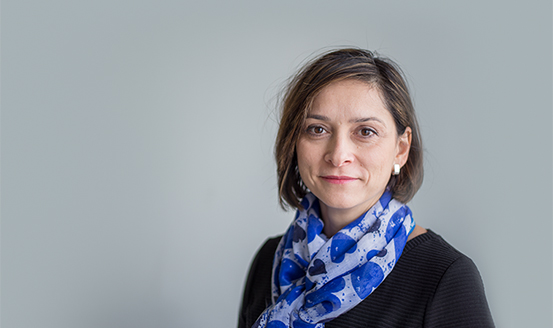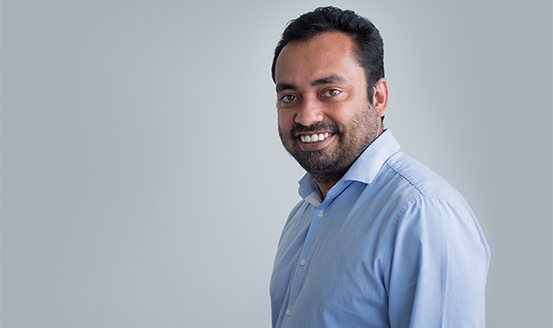Developing a classification system for Frame Running
Frame Running allows people who are unable to run, and have limited or no ability to walk independently, to engage in a sport where they can propel themselves using a three-wheeled frame (like a trike without pedals). The frame helps support the individual with severe mobility impairments to take part in walking/running style exercise. Frame Running provides children and adults, who would otherwise be severely restricted in their sporting ability, to experience the freedom of running or walking on their own and to develop as athletes.
- Background
- What our research has done
- Key result
- Making a difference
- Academics involved
The frame used in Frame Running was developed by two Danish Paralympians in the late 1990s. One of these Paralympians, Mansoor Siddiqi, took part in the Paralympic backward wheelchair pushing event (not on the Paralympic programme any more), while Connie Hansen is a paralympic wheelchair racing medalist and occupational therapist. The duo was determined to create a support structure which would allow people, who were unable to walk independently and who did not have the ability to proper a wheelchair, to take part in a sport which offered significant forward movement in an upright position. Since then, CPISRA (Cerebral Palsy International Sports and Recreation Association) has developed the Frame Running rules and regulation and the original classification system to allow the event to flourish.
There are only a few Paralympic events for these ‘high support athletes’ to take part in, which is why it is so important that Frame Running features at future paralympic games.
In Para Sports, classification systems allocate athletes to a specific sports class based on their impairment level. This creates more of a level playing field, ensuring that athletes compete with others with a similar level of impairment. Examples of impairments are the level of amputation (lower leg or thigh) or how much muscle spasticity (‘tension’) an athlete has. The International Paralympic Committee (IPC) requires that every sport or event should have a classification system that is based on scientific evidence. This means that, for example, classification systems should use impairment measures which are proven to be associated with sports performance and are reliable.
QMU researchers and collaborators have developed a classification system for Frame Running based on scientific evidence. This has allowed Frame Running to be considered for inclusion as a future paralympic sport.
In 2016 and 2017, QMU researchers and collaborators collected data from 48 Frame Running athletes who took part in the annual Frame Running camp and cup event which is held in Denmark. Initial results of this research were presented at the International Paralympic
Committee (IPC) scientific meeting, and in October 2017, it was announced that, as a result of the work by CPISRA and the ongoing research, Frame Running was accepted as a World Para Athletics (WPA). This acceptance allowed Frame Running to feature at World Para Athletics events resulting that the 100m Frame Running race featured for the first time at the European Para Athletics Championships (Berlin, 2018) and the World Para Athletics championships in Dubai in 2019. The inclusion of Frame Running in these championships was a hugely significant development for severely physically impaired athletes throughout the World. For the first time, it provided a Paralympic pathway for this group of athletes where none previously existed - typically such a pathway is only available to less impaired athletes.
QMU’s physiotherapy researchers helped develop a new evidence-based classification system for Frame Running which contributed to the acceptance of Frame Running as a World Para Athletics event in 2017.
Further work resulted in Frame Running being considered as a new event for the Paralympic Games in December 2020 when it was ‘placed as a provisional event’ for the 2024 Paralympics.
- As explained above, research by the Frame Running research team informed the decision to accept Frame Running as a World Para Athletics event which allowed it to feature at the Berlin European championships. Both female and male first ever Frame Running gold medal winners were Scottish. The races were streamed live, introducing the event to European, and in 2019 (world championships), global audiences.
- Ongoing research by the Frame Running research team and refining of the evidence-based Frame Running classification and many meetings with World Para Athletics and IPC committees supported the decision to include Frame Running on the provisional schedule for 2024 Paralympic games. It came as a huge blow to the Frame Running community that, in November 2021, it was announced that the event did not make the final schedule. Despite this setback, the evidence-based classification developed by QMU’s research team has been incorporated in the new World Para Athletics classification rule book. This is currently under review for final International Paralympic Committee approval.
- Our classification research has been different from most previous Para Sport classification research in that the research team used validated clinical measures as impairment measures, instead of developing reliable and valid measures from scratch as in most previous research. Although our approach may not be appropriate for all Para Sport classification systems, this could be a model for future classification research for other new sports involving high support athletes.
- A QMU-led Frame Running survey run in the UK, Sweden and the Netherlands with 115 respondents showed that the majority of athletes feel that taking part in Frame Running has improved their functional mobility in daily life and increased their self-confidence. The results also showed that there are very few reported injuries or accidents related to Frame Running participation which demonstrates the high levels of safety associated with the sport. The research team has presented the results of this survey at international conferences, as well as to local physiotherapists, and as such have activity raised awareness of Frame Running within health professional communities at both local and international levels.
- One of the most rewarding elements of this research work is the development of a Frame Running club in East Lothian, Scotland. Before QMU researchers were involved with Frame Running research, there was no club in Edinburgh or the Lothians and very little awareness of the sport. In 2018, QMU staff introduced Frame Running training at the running track at Meadowmill Sports Centre in Tranent - one young athlete initially took part using a frame bought with QMU research funding and but was soon joined by others using frames purchased by Enjoy Leisure East Lothian. For years, QMU researchers, supported by physiotherapy students, made weekly trips to the Meadowmill track in a bid to continue the development and growth of these Frame Running sessions, thereby allowing children with cerebral palsy to feel the freedom of running or walking around the track on their own. Then, in 2019, the squad was officially incorporated as the ‘all ability squad’ of the local athletics club, Team East Lothian and was led by a qualified athletics coach. More frames were purchased with Team East Lothian funding. The training sessions are now attended by seven children and young people with cerebral palsy or related conditions, as well as two adults with Multiple Sclerosis.
Testimonials – how Frame Running is changes lives!
Taking part in Frame Running has greatly impacted the lives of the children who are part of this group (e.g. ‘”..X absolutely loves Race running. He initially spent most days in his room isolated away from everyone as he does not have many friends he can play with due to his disability….” , '….Mummy, I am so happy that there is a sport that I can do….", “…X discovered racerunning in August 2019 and literally has not stood still since…..”.)
One of the adults with MS has taken her frame to Newcastle to take part in the Great North Run 5K and recently completed 120 miles on her frame as part of a fundraising event. Like for the children, Frame Running has had a huge beneficial impact on her life.
Academics involved in leading/contributing to this research:
- Marietta van der Linden, Senior Research Fellow
- Thomas H. Mercer, research professor
- Pelly Koufaki, Reader
- Kavi C Jagadamma, senior lecturer
- Georgia Andreopoulou, research fellow




